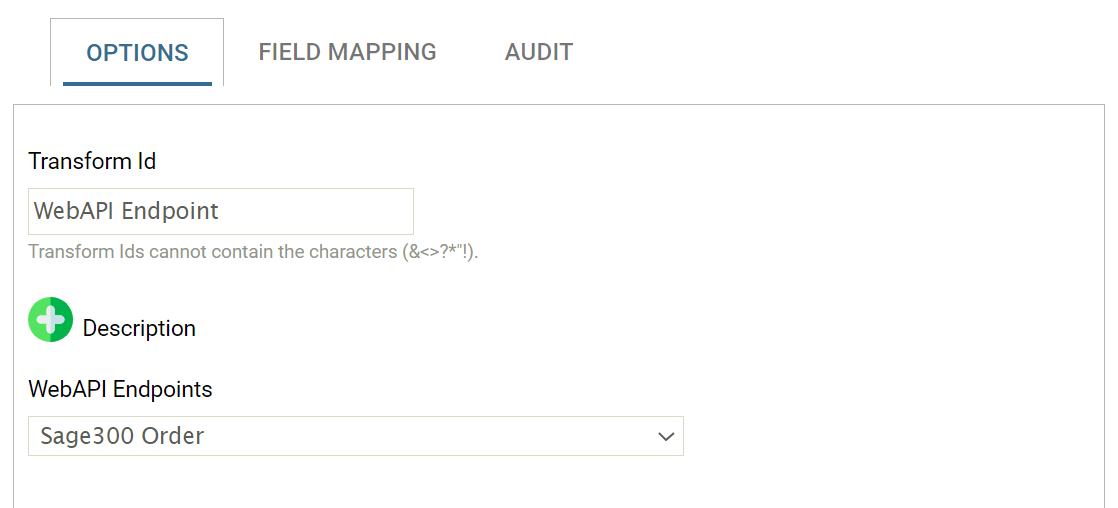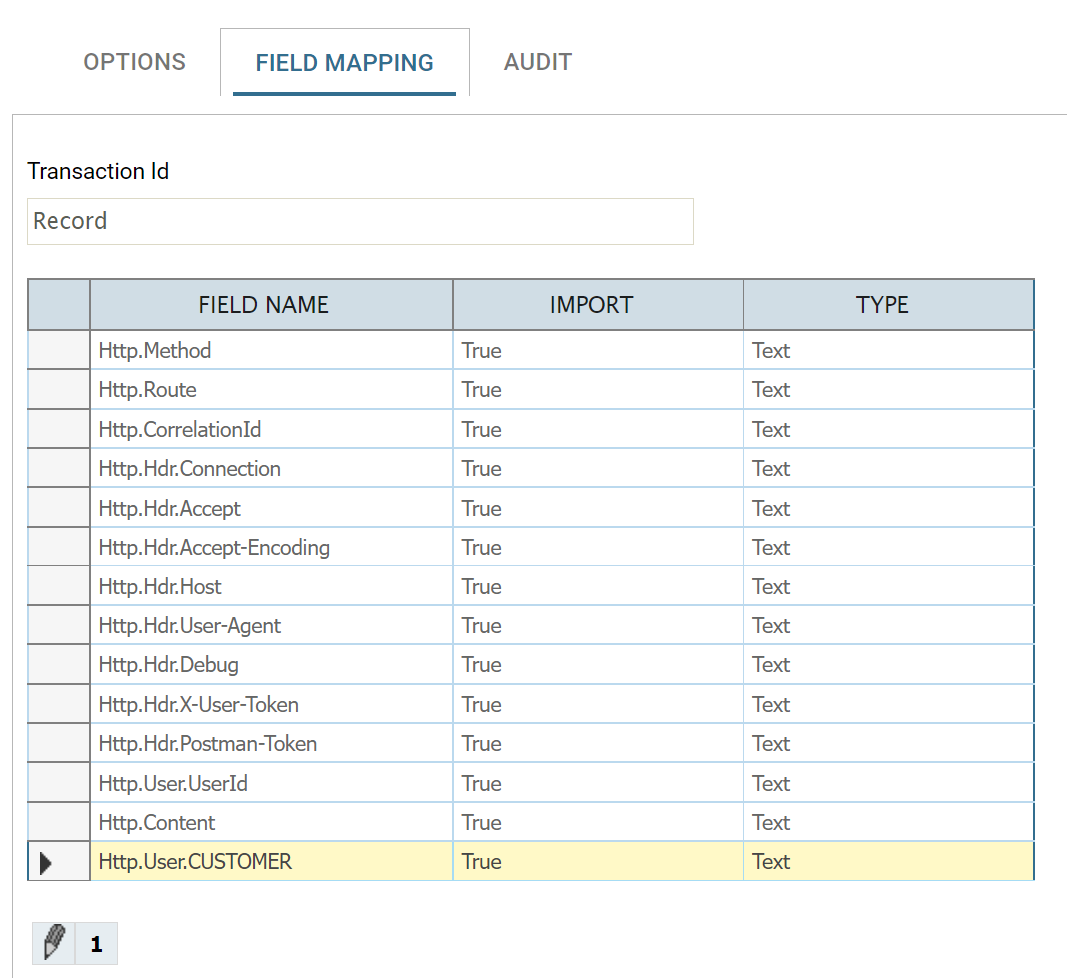WebAPI Reader
The WebAPI reader provides the entry point for WebAPI requests. It provides the means to accept the incoming request, parse the components of the request into fields for use in subsequent transforms.
Options

WebAPI Endpoint
The WebAPI Endpoint drop down associates the integration with the endpoint.
Only the endpoints which are not associated with an integration are displayed in the drop down.
To associate the selected endpoint with the Reader, send the endpoint a debug request and press Refresh. See WebAPI Integration Setup & How-to for using the WebAPI Reader.
Field Mapping & Fields
The requests various components (the route, the method, headers, body, etc) are split into their own fields. To prevent clashes with any other fields further down the line each field is prefixed with Http.

The fields of the WebAPI are comprised of:
-
Route
- The full request Uri is captured as the Http.Route field.
-
Method
- The request method is captured as the Http.Method field.
-
Request Body
- The body of each POST or PUT request will be captured as the Http.Content field.
- The body can then be read by any other reader using the transaction IO Controller.
-
Request Headers
- Each header, except for Authorize will be captured as a field.
- Each field is in the form Http.Hdr.<HeaderName> where <HeaderName> is the name of the header.
- Headers with multiple values are separated with a comma.
-
Correlation Id
- The requests correlation id is captured as Http.CorrelationId.
-
User Id
- The associated with a Web User shown as Http.UserId. If the request is anonymous this will be empty.
-
User Properties
- Each property from the Endpoint’s Property Set is shown as a field.
- Each field is in the form Http.User.<PropertyId> where <PropertyId> is the id of the property.
-
Query Parameters
- Each route or query parameter from the endpoint's route is shown as a field.
- Each field is in the form Http.Param.<ParameterId> where <ParameterId> is the id of either the route token or query token.
Using Preview & Testing
See WebAPI Integration Setup & How-to for using the WebAPI Reader.